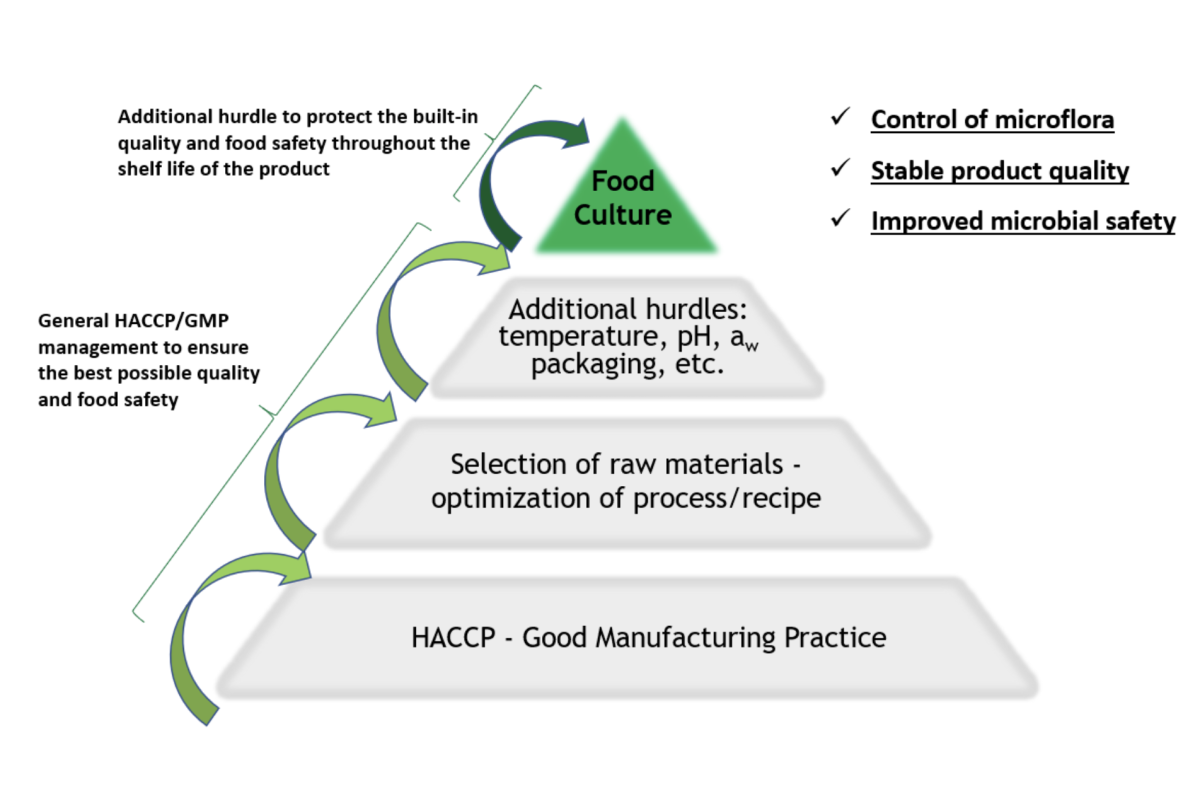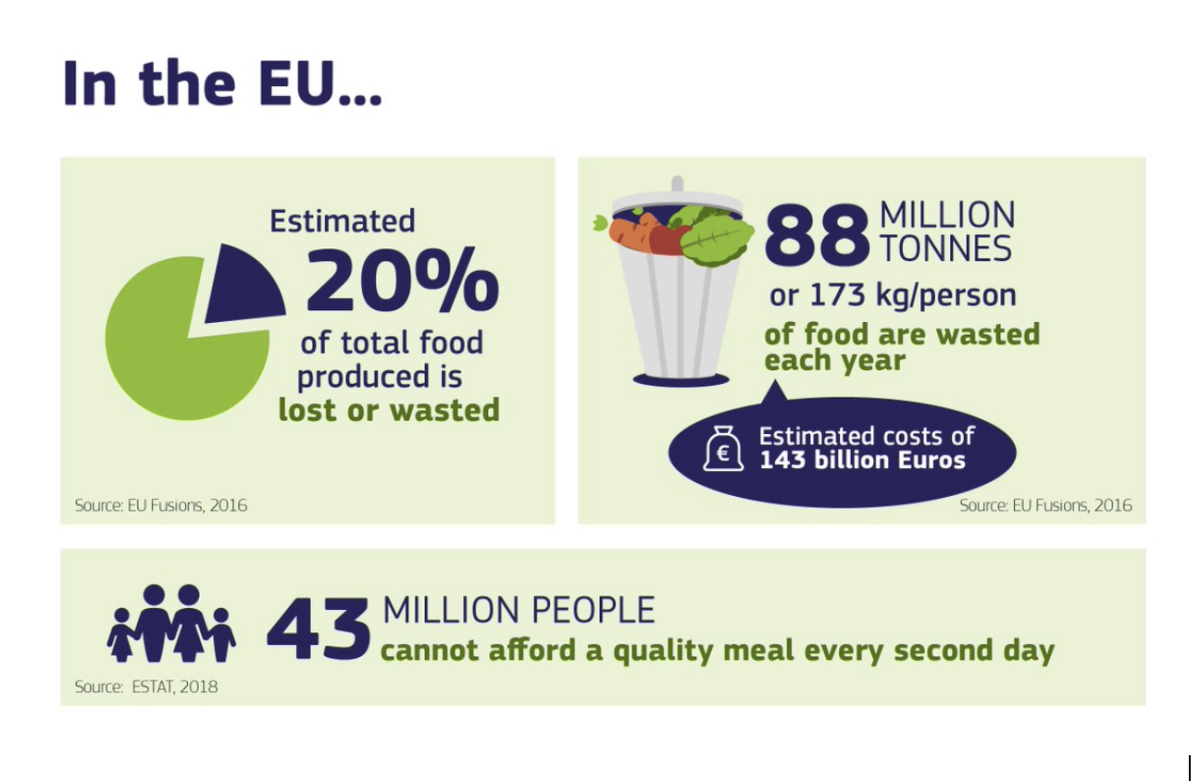Questions & Answers
- What are food cultures?
- What is fermentation?
- How often does spontaneous fermentation occur?
- What is the relation between spontaneous and controlled fermentation?
- Is controlled fermentation a new phenomenon?
- How do food cultures exhibit their activity?
- How does the food industry select food cultures?
- Is the protective effect of food cultures an alternative to good manufacturing practices?
- How can food cultures contribute to the sustainability goals of the European Union?
- How are food cultures defined and regulated in the EU?
- Why should food cultures not be regulated as food additives?
- What would be the impact of regulating food cultures as food additives?
- How to ensure that consumers make informed choices?
1. What are food cultures?
Food cultures (FC) are safe live bacteria, yeasts or filamentous fungi (moulds) used in food production which are in themselves a food ingredient. FC preparations are formulations, consisting of concentrates (> 10^8 CFU/g or ml for bacteria and yeasts and >10^7 CFU/g or ml for filamentous fungi) of one or more live and active microbial strains, including unavoidable metabolites and media components carried over from the fermentation and components (e.g. carbohydrates, organic acids, minerals, vitamins) which are necessary for their survival, storage and to facilitate their application in the food.
2. What is fermentation?
Fermentation is a natural, biological reaction that occurs on any (non-sterile) food because of the natural presence of microorganisms, among which are those used as food cultures.
3. How often does spontaneous fermentation occur?
All non-sterilised foods contain an indigenous microflora and, consequently, a spontaneous fermentation process will always occur, even if it cannot necessarily be observed. Spontaneous fermentation may contribute to the deterioration of the product and shorten its shelf life. Chance will determine whether the indigenous microflora will protect against spoilage organisms and pathogens or not.
4. What is the relation between spontaneous and controlled fermentation?
The use of food cultures guides the spontaneous fermentation process and gives food operators control over the safety and quality of their food products.
5. Is controlled fermentation a new phenomenon?
Along with cooking, drying, smoking, salting and sugaring, fermentation is one of the oldest food preservation methods that has been used for several thousand years to produce safe food and avoid food waste. The selection of the best food cultures to ensure longer shelf life and food safety is an ancient practice: nowadays the microorganisms selected are from the same microbial species, but the knowledge has improved and application has become more precise.
6. How do food cultures exhibit their activity?
Food cultures contribute to higher food safety and extended shelf life of foods by a variety of biological mechanisms:
- Produce metabolites, enzymes and other naturally occurring compounds or degradation products from the food matrix.
- Compete with other microorganisms for limited nutrients and oxygen in the food product or packaging.
- Compete with other microorganisms by occupying the physical space in/on the food product.
All food cultures work through a combination of the mechanisms described above.
7. How does the food industry select food cultures?
The selection of the appropriate food cultures for their protective effects on a certain food matrix is based on detailed analyses of the performance of the cultures throughout the shelf life of the food. New analytical tools make it feasible to identify and characterise microorganisms present in a given environment. These enable the selection of the best candidates from a very high number of food cultures to protect against pathogenic and spoilage microorganisms.
8. Is the protective effect of food cultures an alternative to good manufacturing practices?
The protective effect of food cultures enhances the effectiveness of a food management system but is never an alternative to good manufacturing practices, hygienic design of the production and cold chain conservation. Food cultures create an extra protective hurdle against specific pathogens or spoilage microorganisms in the product during processing and after the product has left the manufacturing facility, e.g., during transport, storage, retail display and even after the opening of the packaging by the consumer.

9. How can food cultures contribute to the sustainability goals of the European Union?
The use of selected food cultures can play a major role in achieving the goals of the Green Deal and the Farm to Fork Strategy. They significantly contribute to reducing food waste by prolonging the shelf life of foods and keeping them fresh and safe for a longer period. For instance, adding food cultures during the production of yoghurt prolongs freshness and extends the shelf life by 7 days, which may potentially reduce yoghurt waste in the EU by up to 440,000 tons: a 30% waste reduction.

10. How are food cultures defined and regulated in the EU?
Food cultures are food ingredients as stated in the Novel Food Regulation1. They fall under the provisions of the EU General Food Law2 and are to be labelled in the ingredients list3.
1. Regulation (EU) 2015/2283 of the European Parliament and of the Council of 25 November 2015 on novel foods, amending Regulation (EU) No 1169/2011 of the European Parliament and of the Council and repealing Regulation (EC) No 258/97 of the European Parliament and of the Council and Commission Regulation (EC) No 1852/2001
2. Regulation (EC) No 178/2002 of the European Parliament and of the Council of 28 January 2002 laying down the general principles and requirements of food law, establishing the European Food Safety Authority and laying down procedures in matters of food safety
3. Regulation (EU) No 1169/2011 of the European Parliament and of the Council of 25 October 2011 on the provision of food information to consumers, amending Regulations (EC) No 1924/2006 and (EC) No 1925/2006 of the European Parliament and of the Council, and repealing Commission Directive 87/250/EEC, Council Directive 90/496/EEC, Commission Directive 1999/10/EC, Directive 2000/13/EC of the European Parliament and of the Council, Commission Directives 2002/67/EC and 2008/5/EC and Commission Regulation (EC) No 608/2004
11. Why should food cultures not be regulated as food additives?
Food cultures are living organisms normally consumed as food and used as characteristic ingredients in foods. Food cultures function through multiple modes of action that depend on the food matrix. Therefore, food cultures do not meet the definition of food additives.

12. What would be the impact of regulating food cultures as food additives?
Regulating food cultures as food additives would:
- Limit the innovative use of fermentation technology in the EU.
- Introduce the disproportionate pre-market approval for food cultures, which for millennia have a long history of safe use.
- Unlike novel foods, where only a few cultures are subject to pre-market approval, hundreds of dossiers would have to be evaluated by EFSA.
- Lead to legal uncertainty, as not all uses of identical food cultures would be qualified as food additive use.
- Would prohibit the use of food cultures classified as food additives in some food products, e.g., yoghurt.
- Be impossible to enforce, since (1) it is not possible to distinguish between added food cultures and indigenous microorganisms in food and (2) the same food culture may be considered as a starter in one application and as food additive in another.
13. How to ensure that consumers make informed choices?
EFFCA developed a proposal to secure legal clarity, proportionality, clear consumer information, transparency and safety concerning the use of food cultures that do not lead to a full fermentation of the product (i.e., that do not change the product visibly or entirely). The transparent labelling on the final food label would state:
- “Protected by fermentation” in case of the use of food cultures for their protective effect;
- “Food culture” in case of the use of food cultures as starter culture in the ingredients list.
This would establish a harmonised and proportionate solution for the use of fermentation technology.
In December 2022, similar recommendations were made by the FIT FOR FUTURE Platform.
A visual presentation of the Q&A is available here.
Sources
- EFFCA, Food cultures are ingredients: need for regulatory clarity (slides), 10 June 2020.
- IDF, Bioprotection, IDF Factsheet 007/2019-09, 3 September 2019.
- FIT FOR FUTURE Platform Opinion, Biosolutions (p. 17-18), 1 December 2022



